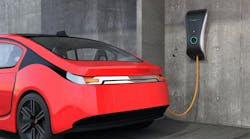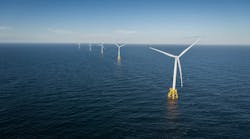The shift of the electric power business model from centralized bulk generation to distributed generation is the fundamental disruptive force facing the utility market over the next several years. The electrical products market, meanwhile, has the opportunity to support the shift, supplying products and services to help both sides make the most of distributed generation’s promise.
Over the past few weeks, several reports have been released that put numbers on some of the underlying technologies associated with distributed generation (DG). Analysts at Navigant Research, Chicago, in particular have been working the distributed generation space intensively of late, and coming up with estimates for market size over the next 10 years. Together they paint a picture of rapid growth in DG technologies and rapid transformation of the electric power landscape.
Residential generation and storage
Once the cost and convenience of generation and storage on a home scale become competitive with grid-source power — a trend the Rocky Mountain Institute has projected market-by-market for the United States — the groundswell of defections will begin to roll unless utilities find a value offering to counter it. Navigant analysts forecast that residential energy generation and storage will reach $71.6 billion per year worldwide by 2023. Leading the technological surge are solar photovoltaic (PV) panels. Worldwide revenue from all forms of residential distributed generation and energy storage now stand at $52.7 billion annually in 2014, suggesting an increase of almost $19 billion, or 36%, over the next 10 years.
Virtual power plants
One of the many technologies available to utilities to counter defection from their grids is to use information technology to adapt by bundling a number of distributed generation resources together and managing them as “virtual power plants” (VPPs).
Navigant analysts found that VPPs offer the highest profit for owners of generation assets. VPPs combine diverse independent resources into a network via sophisticated planning, scheduling and bidding of distributed generation-based services. According to Navigant, total annual VPP vendor revenue will grow from $1.1 billion in 2014 to $5.3 billion in 2023.
Nanogrids and microgrids
Small grid power systems — reminiscent of municipal power cooperatives that have been around since the early days of electric power, but which operate at a campus, neighborhood or smaller level — are a key part of the commercial and institutional distributed generation picture, particularly in developing countries.
Nanogrids, as smaller versions of microgrids, can serve as modular building blocks for energy applications that range from emergency power for commercial buildings to the provision of basic electricity services for people living in extreme poverty, Navigant found. North America is the leading region for microgrids today, but the largest and fastest-growing nanogrid markets are remote systems operating in the developing countries of the Asia-Pacific region, the Middle East, and Africa. According to Navigant, worldwide installations of nanogrid capacity will grow from nearly 8,900 megawatts (MW) in 2014 to 14,200 MW in 2023 — an increase of 60%.
Storage solutions
Advanced batteries and fuel cells are key technologies for the energy storage required to operate a distributed generation system. Fuel cells have been struggling to attain commercial viability, but Navigant found that stationary fuel cell systems are showing strong growth compared with portable fuel cells and other categories. Stationary fuel cells have seen two years of strong growth, with an ongoing boom in prime power and residential combined heat and power fuel cell system shipments. Navigant forecast that more than 1.2 million stationary fuel cell systems will be shipped annually by 2022.
The real driver of distributed generation’s growth, though, will be advances in battery technologies. Navigant estimates that the worldwide market for next-generation advanced batteries — including ultracapacitors, lithium sulfur and new flow-battery technologies — will reach $9.4 billion annually by 2023, from an estimated $182 million in 2014.









